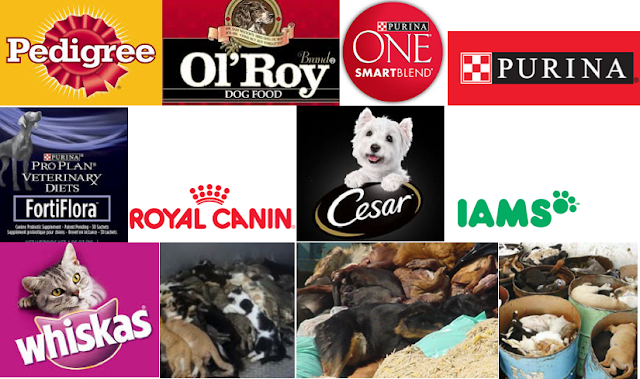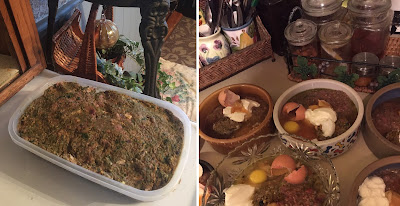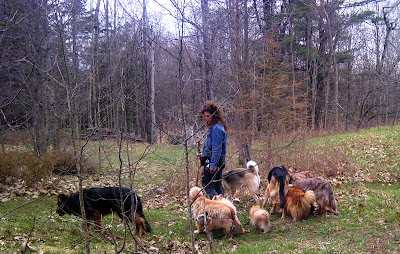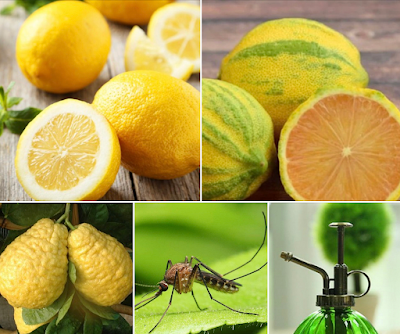Dead Dogs, Dead Cats are used as a Pet Food Ingredient
FACT – the bodies of dead dogs, dead cats are used as a pet food ingredient, this is NOT an urban legend, nor is it a false statement.
Below I will present you with the facts, tips on how to avoid purchasing
pet food products that include dead dogs, and dead cats as an ingredient, why
consuming such products are bad for your own animal, and what you can do to
help stop this unethical pet industry practice.
Proof - Dead Dogs, Dead Cats are Used as a Pet Food Ingredient
According to the (NRA – National Rendering
Association), there are approximately 165 Independent rendering plants in the
USA and Canada that use specially designed trucks to collect dead animals from:
- Animal shelters and pounds
- Veterinarian clinics, veterinarian hospitals
- Butchers
- Farms and ranches
- Feedlots
- Restaurants
- Meat and produce markets (food markets)
The Natural Agricultural Law Center presented a
report to Congress in 2004 Congressional Research Service Report (CSR) on Animal Rendering: Economics and Policy. In the
first page of the report the CSR points out “the industry has largely operated
outside of public view”. This is just one
of many reasons why you may not have heard about this previously.
On page 3 of the same report (section titled
“Independent Operations”) the The Natural Agricultural Law Center clearly
STATES that dead dogs and dead cats are picked-up and processed (rendered),
along with many other “mixed species” on a routine basis, the resulting
ingredients (meat meal, rendered fat, bone meal), destined for animal feed,
which includes pet food.
To quote the report further
“Independent operations handle the other 30%-35% of rendered material. These plants
(estimated by NRA at 165 in the United States and Canada) usually collect
material from other sites using specially designed trucks. They pick up and
process fat and bone trimmings, inedible meat scraps, blood, feathers, and dead animals
from meat and poultry slaughterhouses and processors (usually smaller
ones without their own rendering operations), farms, ranches, feedlots, animal shelters,
restaurants, butchers, and markets. As a result, the majority
of independents are likely to be handling “mixed species.” Almost
all of the resulting ingredients are destined for nonhuman consumption (e.g. animal
feeds, industrial products). The U.S. Food and Drug Administration (FDA) regulates
animal feed ingredients, but its continuous presence in rendering plants, or
infeed mills that buy rendered ingredients, is not a legal requirement.”
On the same page of the report under the
section “Value and use of Rendered Products” the report states “Poultry operations and pet food
manufacturers accounted for 66% of the domestic MBM market of nearly 5.7
billion pounds in 2000.” To help you
understand what this means, I will clarify for you…
In the USA, and Canada billions of pounds of
rendered meat, including meat and bone meal (MBM) made from dead dogs, and dead
cats is used as an ingredient in Pet Food.
As reported in the LA Times in 2002, “Los Angeles city
and county shelters send more than 120,000 dead dogs and cats to be rendered in
a typical year.” That’s a lot of dead dogs and cats sent to rendering plants
for pet food and animal feed. LA and area has many high kill shelters, so do
other counties in the USA – for example Miami Dade, New York City and so on.
Changes Since
2004 – Further Erosion of ‘Standards’
2015
In August of 2015, the US Food and Drug
Administration (FDA) announced that it would no longer offer, and provide
review of pet food manufacturer documentation for the purpose of substantiating
‘human food grade’ claims on pet food (and treat labels). The FDA qualifies foods to be human food grade (safe for human consumption), via the designation 'edible'.
What’s the impact of this change? We have
even less assurance that a Pet Food product labeled ‘human food grade’ is: a)
actually made with 'edible' ingredients, and; b) does not contain meat or by products derived
from dead dogs and cats.
What’s up and coming? Is there a plan in
place to effect better quality assurance?
AAFCO is gearing-up to devise their
own regulations to define ‘human food grade ingredients’. Unfortunately, AAFCO
has a terrible track record when it comes to protecting dogs and cats from unhealthy
(allergy inducing, toxic, chronic disease and cancer causing) ingredients in
pet food. Keep in mind that AAFCO IS the
Pet Food Industry – the AAFCO organization is made-up of representatives from
the pet food, industry, and their affiliates. AAFCO is a self-regulating, self-interested
organization. AAFCO certification of a pet food product has zero bearing on the
quality of a product, and its actual safety for your pet.
Condemned Denatured Meat
The
bodies of dead dogs and dead cats fall under the classification of ‘condemned’
meat (includes bones, fatty tissues, muscle meat, offal). Condemned meat also
includes ‘downed’ (cannot stand on its own) farm animals (called ‘livestock’ by
the farm and food industry), farm animals that are deceased, dying or dead
before they hit the slaughter house floor, dead zoo animals, and ‘road’ kill.
By
law, condemned meat must be ‘denatured’
and can only be used for pet food, other animal feed. It is illegal to use this
type of meat in made-for-human products (food, toiletries, make-up, crayons,
etc. It IS legal to use the by-products in made-for-pet supplements, and health
care products. It IS legal to use the by-products
In
order to ‘guarantee’ condemned meat does NOT enter the human food-chain - the
FDA, Health Canada, the FSA, the EFSA, etc. mandate the denaturing of condemned
meat.
All
approved denaturing agents contain KNOWN and suspected –
- Allergens
- Toxins
- Carcinogens
You
can read about condemned meat and the denaturing process here.
In my
opinion the FDA’s legally binding definition of ‘safe’ ingredients for pet food is a farce.
The Rendering Plant
On
the way to the rendering plant the truck may stop at: a slaughter house to
pick-up ‘condemned’ carcasses of other animals; a butcher shop to pick-up
butcher shop floor trimmings, and meat past its allowable sale-date; a grocery
store to pick-up meat past its best before date. The meat from the butchers and
grocery store includes meat that is wrapped in plastic and Styrofoam packaging,
cardboard, or paper wrap. – wrapping and
packaging are NOT removed, and are rendered along with the meat.
Upon arriving
at the rendering plant, the trucks dump their ‘load’ on the ground, or in bins
(outside or inside the rendering plant). The carcasses are left to sit, exposed
to flies, other insects and parasites until the carcasses are moved to the
rendering room.
In
the rendering room the dead dogs and dead cats are tossed into vats or large
vessels along with other whole and partial animal carcasses of various species,
rancid oils collected from the back of restaurants, and expired cuts of meat
complete with the wrapping and packaging. This mixture is then put through the
rendering process, which may be wet or dry rendered, depending on how the
rendered product will be used.
Both
dry and wet rendering result in separation of fat (grease, glycerin, fat, lard,
tallow, stearic acid), from ‘protein’ meal.
Some
of the fat is used in pet food (as an ingredient in kibble, and sprayed onto
kibble after forming), and other animal feed. Glycerin is used in a wide range
of products from pet food, pet treats, pet ‘care’ products like toothpaste, pet supplements, glues, solvents, anti-freeze, etc. The non-edible
tallow is used to make crayons, and wax-paper, etc. Stearic acid is used in pet
food, pet supplements and pet health ‘care’ products, industrial applications,
etc.
The
dry protein meal is sold for making pet food (i.e. dry kibble, treats and
supplements), and other feed for other species of animals. The wet protein meal resembles a thick, chunky
stew and is sold to pet food manufacturers for use as canned / wet dog and cat
food.
Compounding The Threat To Health
Sodium Pentobarbital (Pentobarbital)
The drug pentobarbital, is used to
anesthetize dogs and cats prior to surgery. It is also used to ‘euthanize’ dogs
and cats. Pentobarbital has been found in pet food.
Pentobarbital is not destroyed during
rendering. Pentobarbital is NOT used for large farm animals (i.e. cows, pigs,
sheep, etc.).
The ONLY plausible conclusion – those
pet foods that tested positive for pentobarbital contain rendered dogs and
cats.
The FDA says otherwise - the Agency
wants us to believe (see here),
that euthanized cattle are the root source of pentobarbital in pet food.
Ridiculous attempt to hide the truth. As
noted above, cows and other large farm animals are not anesthetized or ‘euthanized’
with pentobarbital, nor is road kill (deer, raccoons etc.).
The FDA also wants us to believe it’s
OK for our dogs and cats to ingest pentobarbital with food on a daily basis.
This should not be a surprise as the FDA approves the use of many toxic substances in pet food, from dead dogs and cats, such as flavoring and flavor enhancers, and hidden ingredients such as ethoxyquin.
The dead dogs and cats whose bodies are
rendered for fat and protein meal are contaminated with the many
pharmaceuticals that they were fed, or injected with – antibiotics, steroids
such as prednisone, vaccines,
and other toxins such as…
Veterinarian prescribed flea tick
heartworm preventatives are toxic, synthetic pesticides that remain in the
body, and the flesh after death. You can read about the health destroying
effects of these synthetic preventative drugs here.
Definitely not a substance your dog or cat should be ingesting in his/her food.
Other Foreign Substances
When dogs and cats die, or are killed
at local kill / high kill ‘shelters, and veterinarian offices the staff don’t
bother removing their former clients’ personal gear (collars etc.). The dead
bodies are tossed into the rendering vats as is - collars (nylon webbing,
leather, plastic and metal parts, choke chains, etc.), Pet ID Tags (metal or
plastic), microchips, etc.
February 2018 - Smuckers, Big Heart Brands Gravy Train and Kibbles N'bits and Skippy found to contain pentobarbital. Recall list here.
Euphemisms Used by The Pet Food Industry To Hide the Truth
The
pet food industry are masters when it comes to hiding the truth. Euphemisms are
used to disguise the true nature of ingredients (i.e. dead dogs and cats),
here’s a few examples to look out for…
- Animal Digest
- Animal Fat
- Animal protein meals
- By-products
- Bone-meal
- Gelatin
- Ground bones
- Glycerin
- Fats
- Rendered fats
- Meat by-products
- Meat meal
- Fresh meat ingredients
- Natural meat ingredients
- Quality meat ingredients
- Real meat ingredients
- etc.
Shelters, Veterinarian Clinics and Rendering – Which Do It, and Why?
Many (so
called) ‘shelters’ and veterinarian clinics CHOOSE to send their former dog and
cat clients’ body off to a rendering plant, to be rendered down and used as an
ingredient in pet food. This IS a
choice; it is NOT a necessity.
‘Shelters’
(municipal pounds, ACCs – Animal Control Centers, etc.)
Shelters
that request body pick-up by rendering plants, are typically kill or high-kill
facilities. Small, medium and large shelters, kill and high-kill shelters.
FACT
- the decision to be a kill, or high kill shelter is NOT predicated by size of
community, nor by the quantity of dogs and cats ‘surrendered’ to the shelter.
It’s NOT a monetary decision. Look at the micro-culture of that facility to
understand the real reason. The ‘decision’ and its ‘justification’ (excuses) result
from a specific mind-set – one of ignorance, and in many cases lack of ethics. Some
of these ‘shelters’ routinely use gas chambers to ‘euthanize’ dogs and cats. Such shelters offer excuses to
justify the unjustifiable – I have interviewed some of the shelter directors.
They happily offered to show me how ‘humane’ a death by gas chamber is. Quite
happy to place a dog in the chamber so I could watch him/her die. I declined
their offer.
Small
minimally funded shelters have PROVEN that transitioning to, and maintaining a
very low rate of kill, with a high-rage of adoptions, or being a no-kill facility is not more expensive to
operate. Achieving a low kill, or no-kill status simply takes the will of a
community and support of its shelter to better organize and deploy the
resources they already have.
The vast
majority of dogs put to death daily, at shelters in Canada and the USA are
perfectly adoptable dogs. They end-up in kill shelters through no fault of
their own. The dogs, or cats owner falls ill, or dies and family members don’t
step up to take the dog or cat in. The owner, due to financial difficulties, must
move to assisted housing where breed bans exist - they can’t bring their much-loved
dog – i.e. New York City. The number-one most euthanized 'breed' in North America
is the “Pit Bull”, pit bull crosses, and pit bull “like” dogs. Society’s fault – not
the dog’s fault. Pit Bulls are amazing dogs, there is no excuse for breed specific legislation (BSL) against pit bulls.
And
yes, many wonderful dogs get dumped at high-kill shelters because their owners
are faithless, selfish beings – “we’re having a baby, we have no time for
Fido”, “Fido” is too hyper”, we’re moving, and we don’t want to bring Fido to
our new home”, “I don’t have time for “Fido”, etc. etc.
There
is something drastically wrong with a society that allows its dogs and cats to
be treated thus. Humans are experts in finding excuses to justify the terrible
things they choose to do – and that includes veterinarians and vet techs who
work at kill and high kill shelters, where they (veterinarians and vet techs)
kill one dog or cat after the other, after the other. They would like you to
believe they are ‘doing the right thing’ for the dog or cat. They would like
you to believe they comfort the animal and make their passing easy and
‘comfortable’. What a load of crap. No
veterinarian or vet tech with a modicum of ethics would take the job. FACT. TRUTH.
Think about this...
Royal Canine and Purina:
Think about this...
Royal Canine and Purina:
- Are the largest pet food manufacturers in the world.
- Products are sold across the world.
- Donate the largest volume of pet 'food' to kill and high kill shelters, in countries all over the world.
- 'Donate' to shelters that use gas chambers, and heart sticking to kill dogs and cats.
- Royal Canine and Purina are among the largest pet food industry buyers of condemned, denatured meat and meat by-products. Yes, that's right.
- We have shelter dogs and cats being fed donated food that can contain dead, former shelter dogs and cats.
- Many of those (live, living) shelter dogs and cats will be sent to death-row;
- After which they will be 'euthanized' (killed).
- Those (now) dead dogs and cats will be sent to a rendering plant, and:
- Will become an ingredient in pet food.
Veterinary
Clinics / Hospitals
First
a few basic facts to keep in mind…
One -
the cost to send a dead (or euthanized) dog or cat to a local crematorium more
than the cost to have a rendering plant pick-up a deceased client.
Two -
veterinarian clinics operate with a VERY high profit margin.
Three
– the veterinarian does not pay the cost of handling ALL of his/her dead
clients. Many pet owners choose to pay their veterinarian clinic to have their
dog, cat cremated, and/or buried at a pet cemetery. Many other pet owners –
particularly those in rural communities, choose to bring their pet home for
burial. The clinic only has to cover the cost of handling a portion of their
deceased clients.
All
for-profit veterinary clinics in Canada and the USA, can afford to pay the cost
of ensuring that their client’s body is respectfully taken care of.
There
are many veterinarian clinics / hospitals that choose to pay the cost of
handling their deceased dog and cat clients in a respectful manner.
Sadly,
there are also MANY veterinarian clinics that CHOOSE to send their client dogs
and cats to a rendering plant.
Veterinary
practices that send their dog and cat clients’ to rendering plants do so to obtain
and maintain the highest possible profit margin. A clearly unethical choice. A
deceptive choice, with a very real negative impact to the clinics live dog and
cat clients. Also worthy of note - veterinarian prescription pet foods and treats (i.e. Purina, and Royal
Canin) contain condemned, denatured, rendered animals, which can include dead dogs, and
dead cats. These products are made with VERY inexpensive, inappropriate
(to say the least), ingredients. ‘Scientifically engineered’ to mask symptom(s)
of an illness or inflammatory chronic condition. Designed to trigger a cascade
of other health issues later - thus making the connection difficult for the
average pet owner to recognize, while ensuring future ‘work’ for the
veterinarian until the animal finally succumbs to death-by-design. These
prescription ‘food’ products are cheap to make, and rake-in HUGE profits - for the ingredient supplier, the manufacturer,
and the point-of-sale retailer (the veterinarian). Not much incentive for a
veterinarian to stop supplying the ingredients (dead dog, dead cat). OK, yes –
some veterinarians are ‘just’ naïve, dupes of the pet food industry, he/she may
not know, it is a remote possibility. Many other veterinarians DO know. When a
veterinarian says to you “I promise I will treat your dog’s (or cat’s) body
with respect” what your veterinarian is really saying is “I promise not to send
your dog or cat to a rendering facility”.
Not Listed as an Ingredient
You
will (almost) NEVER see ‘dog’, or ‘cat’ listed as an ingredient in a pet food,
pet treat, or on a pet supplement label.
Regulatory bodies (i.e. the FDA, Health
Canada, the FSA), do NOT require specific identification. The regulatory bodies allow dead dog and dead
cat as a hidden ingredient (an ingredient, of an ingredient).
Simply Rawsome is the ONLY pet food
manufacturer I have seen openly, and honestly label products as denatured. However,
I doubt that all of their clients understand what denatured really means, as pertains to condemned meat. I am NOT applauding Simply Rawsome for selling denatured meat to their clients - in my opinion selling denatured meat IS 100% unethical.
Which Pet Foods Can Contain Dead Dogs and Cat Ingredients?
Pet
foods, pet treats and pet supplements that conform to the following:
- Meat in product is NOT guaranteed edible
- All ingredients are NOT guaranteed edible
- This includes the following commercial pre-prepared pet food products –
- Dry Kibble
- Canned / wet food
- Air dried food
- Minimally cooked
- Freeze dried raw
- Dehydrated
- Frozen Raw
Thanks
to the FDA’s 2015 decision - and pet food could potentially contain dead
dogs and cats because the FDA no longer inspects so called ‘human food grade’ pet food.
What You CAN Do To Avoid Dead Dog, Dead Cat Pet Food Ingredients
- Make your dog and cat’s pet food – you get to control all of the ingredients.
- You can find an example recipe here.
- Purchase raw pet food from a trusted pet food manufacturer.
- While you can look for products that are labelled 'human food grade' or 'human grade' - the term is not a guarantee of actual quality. 'Human food grade' is not a legally binding term - the term 'edible' is used by the FDA to designate a food as safe for human consumption, human food grade is an unregulated term.
- If you do NOT want to feed raw, you CAN cook the raw food product.
- If you insist on feeding your dog and cat dry highly processed food (dry, or wet/canned), be sure to purchase products that clearly state all ingredients are human food grade - but remember, that is not a guarantee that the ingredients are edible as defined by the FDA.
How To Prevent your Dog, Cat’s Dead Body from Becoming Pet Food
- If you can do so (i.e. you live in a rural location), take your dog or cat home after he/she has been euthanized by your veterinarian, bury your dog or cat yourself, or have a pet burial company do this for you. In which case your pet will be placed in a pet cemetery.
- You can pay your veterinarian to have your pet cremated and the ashes returned to you.
- If you do not wish to, or cannot afford to have your dog or cat cremated ask your veterinarian what their policy/procedure if for handling deceased dogs and cats remains. Find out if the clinic sends the deceased to a rendering plant, or to a local crematorium etc.
- If you don’t get a satisfactory answer don’t take your pet to that veterinarian to be euthanized. Go to a veterinarian that guarantees your pet’s body will be treated respectfully.
- This is a conversation you can have with your veterinarian any time – you don’t have to wait until you are faced with your pet’s impending passing.
Pet Food Products That Can Contain Dead Dogs and Dead Cats
(Pet
Food, Pet Treats, Pet Supplements)
**Examples
– this is a partial list only**
Keep in mind that many of these products are sold in North America, South America the EU, UK, Asia, Africa, the UAE and elsewhere across the world. Products made by, for example Purina are simply renamed depending on where they're being sold.
Article by Karen Rosenfeld
- Against the Grain
- Cesar Softies
- Cocolicious Party Animal
- Gravy Train
- Evangers
- Iams
- Kibbles 'n Bits
- Meow Mix
- Nature’s Gift
- Nature's Recipe
- Old Yeller
- Ol’ Roy
- Pedigree
- Pounce
- Purina Beggin’ Strips
- Purina Beneful
- Purina Busy Bone Treats
- Purina Dog Chow
- Purina FortiFlora
- Purina Friskies
- Purina Indoor Cat
- Purina Milk Bone
- Purina Puppy Chow
- Purina Pro Plan
- Purina Pro Plan Veterinary Diets
- Purina Veterinary Diets
- Purina Veterinary Formulas
- Royal Canine Veterinary
- Whiskas Temptations Cat Treats
A Systematic Problem that YOU can Help Stop
The
use of dead dogs and dead cats as a pet food ingredient is not ethical, and damages
the health of live dogs and cats. The use of dead dogs and dead cats as a pet
food ingredient is a systematic problem…
- Endorsed by governmental agencies and departments (i.e the FDA and Health Canada).
- Embraced by an unethical food industry.
- Supplied by greedy, deceitful, unethical veterinary clinics, and tax-payer and privately funded deceitful, unethical kill and high-kill shelters.
- And the general public that actively contributes to the systematic problem – by failing to take responsibility for the animals under their guardianship, and in so doing dumping dogs and cats in shelters where they have little to no hope of leaving alive.
Change
must begin at the grass roots level. YOU can help STOP this terrible problem by following the steps outlined above.
For
the love of dogs and cats pass it on.
Holistic Diet, Nutrition, Wellness Services Tailored to Your Individual Dog and Cat
For information about my holistic diet, nutrition, wellness services visit my:
Maintain good health | Address acute and chronic health issues | Pre and post surgery support and recovery
My holistic wellness services are available worldwide via video consultation.
🌎 USA | Canada | UK | Europe | Australia | New Zealand | Asia | South and Central America | Africa | UAE
📱 FaceTime | Facebook | Skype | WhatsApp
Holistic Behavioral Services For Your Dog
For information about my holistic behavioral services visit my:
For dogs of all ages, sizes and breeds
My holistic behavioral services are available locally in-person and worldwide via video session.
🌎 USA | Canada | UK | Europe | Australia | New Zealand | Asia | South and Central America | Africa | UAE
📱 FaceTime | Facebook | Skype | WhatsApp
Affiliations to Companies
✓ None.
✓ I don't sell food or supplements.
✓ I'm not aligned with any companies.
✓ None.
✓ I don't sell food or supplements.
✓ I'm not aligned with any companies.
Article by Karen Rosenfeld














